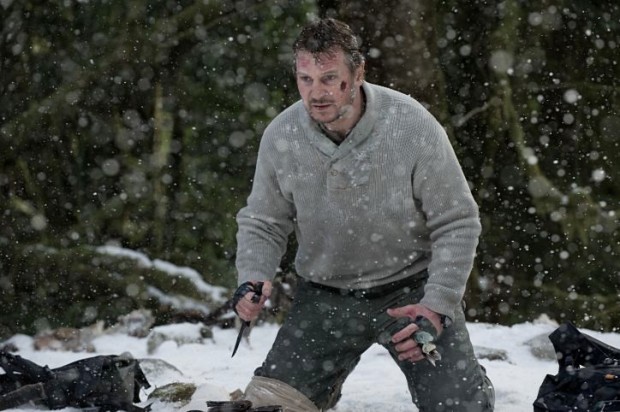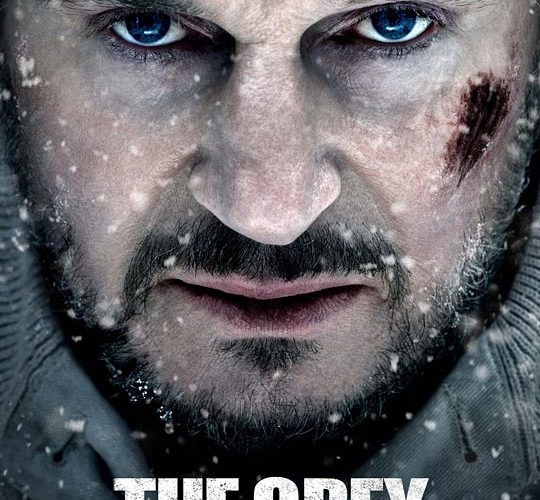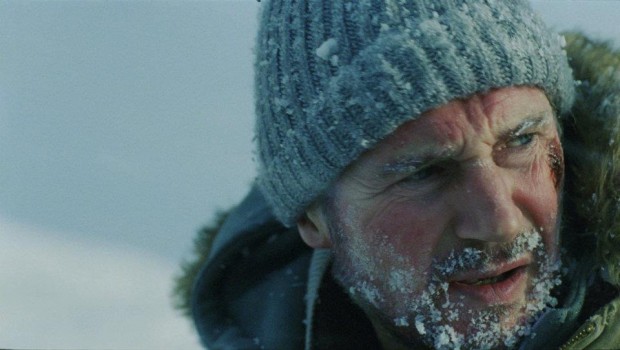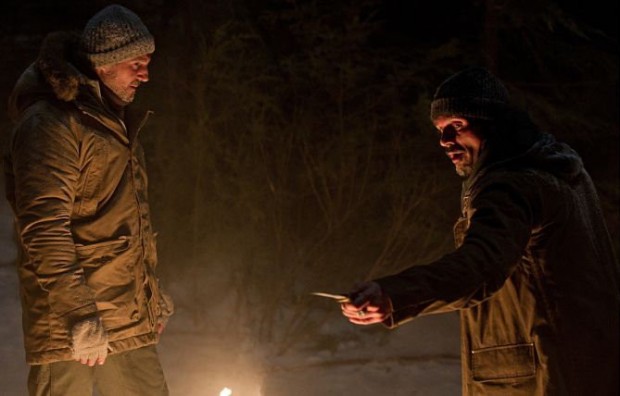Boasting a kinetic and visually-adventurous filmmaker, a battle-tested and diverse action star and a supporting cast equal parts testosterone and heartbreaking vulnerability, not to mention its stripped-down, man vs. nature plot, The Grey promises a lot. That it doesn’t quite make good on its promise demonstrates the strange state movies are in right now. Half actioner, half drama, Carnahan’s film reflects a time for cinema in which we expect to know everything about the movie we are seeing before we see it. Trying to go against the grain here might severely hurt The Grey‘s commercial chances after the first weekend.
With a star like Liam Neeson and its Taken-mimicking release date (not to mention it’s deceiving marketing campaign), writer/director Joe Carnahan‘s film appears to be an action extravaganza, much like Unknown was last year. This time around, the film in question is not what is hinted at. Carnahan’s film, the story of a plane crash in the Great North, its seven survivors and their attempt to escape the wolf-populated wilderness, is equal parts bombastic and meditative.
Beautifully shot by Masanobu Takayanagi (Warrior), the film makes the most of its location. We feel the snow and wind race across the screen, many times from a wide angle that nearly blots out the principal players, melting them into white dots on a much larger tapestry. This visual magnetism is matched by a elegant, spare score from Marc Streitenfeld (Robin Hood), the man behind the music for Ridley Scott‘s upcoming Prometheus.
Complimenting Streitenfeld’s subtle score is a jarring and ear-piercing sound design, most effective during the plane crash that sends our hero Ottway (Neeson) and company hurling towards the icy ground. By cutting out the loud sound of a broken airlock with each splice, it’s all the more apparent and frightening when it returns. This abrasive sound editing is put to use throughout the film, keeping a rather repetitive script exciting enough.
Unfortunately, the repetitiveness is hard to ignore. Written by Carnahan and Ian Mackenzie Jeffers, the archetypal characters here never change much. Fire after fire, trek after trek, these men fear the wolves that are after them, and again. And again. Sure, the tough guy Diaz (played by Frank Grillo), softens up by the end, but for the most part there is nothing much dynamic in these manly men braving wolves and cold. Consider, in comparison, The Edge, the David Mamet-scripted survival tale which focused primarily on how the competitive relationship between two men makes a 180-degree change towards complete dependency whilst remaining just as competitive as ever.
 These high-brow emotions are never at play in Carnahan’s film, which stubbornly refuses to dig into anything at all. And herein lies the ultimate problem with The Grey: it’s determined to be more than an action thriller but unwilling to become a character-driven drama either. In fact, the most affecting moment in the film comes early on, moments after the plane crash, when Ottway talks a scared James Badge Dale through the realization that he is going to die. It’s a brutal scene that wears its heart on its sleeve.
These high-brow emotions are never at play in Carnahan’s film, which stubbornly refuses to dig into anything at all. And herein lies the ultimate problem with The Grey: it’s determined to be more than an action thriller but unwilling to become a character-driven drama either. In fact, the most affecting moment in the film comes early on, moments after the plane crash, when Ottway talks a scared James Badge Dale through the realization that he is going to die. It’s a brutal scene that wears its heart on its sleeve.
The film comes close to this kind of honesty a couple more times – over one fire, in particular, in which Dermot Mulroney remembers how his daughter wakes him up in the morning with her long hair – but never fully invests in the tone. Conversely, when their is action, it’s full-stop. This includes an impressive cliff-jump sequence featuring capable character actor Dallas Roberts. During a scene like this, fans of the action-y Neeson will feel they are getting their money’s worth. There just isn’t that much of it.
What we are left with is two separate hour-long films that are both impressively-made and impressively-acted, one a thriller and the other a bleak drama. If only the two were stitched together a bit more.
The Grey hits theaters Friday, January 27th.



